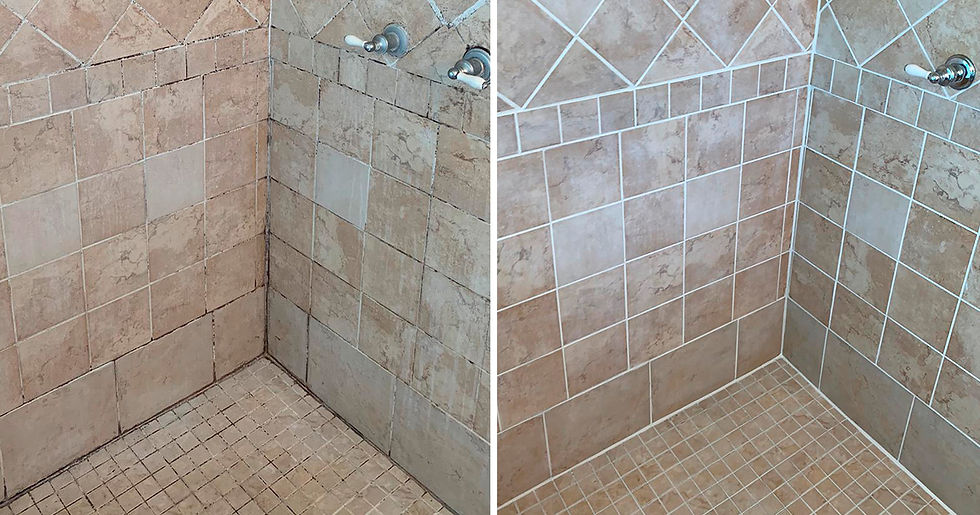Ensure Your Home Stays Safe with Professional Damp & Mould Inspection
- Building Science Inspectors

- Jun 26, 2025
- 4 min read
Updated: Aug 13, 2025
Dampness in homes can lead to serious issues if not detected and managed promptly. A damp environment is often breeding ground for mould, which can severely impact both the structural integrity of your home and the health of its occupants. To fully safeguard your property, it is crucial to understand how professional mould inspection services can help.
Understanding Mould Inspection Services
Mould inspection services specialize in identifying and assessing mould growth in residential and commercial properties. These services are vital for those who suspect dampness or mould but are unsure of the extent of the problem. A professional inspector uses specialized tools and techniques to detect hidden mould, moisture levels, and areas at risk.

Using advanced technologies like thermal imaging and hygrometers, qualified inspectors can accurately pinpoint sources of moisture. Early detection is essential because mould can grow rapidly and can pose serious health risks, particularly for individuals with allergies or respiratory conditions.
Signs Your Home Might Need Inspection
Recognizing the signs of dampness is the first step in maintaining a safe living environment. Here are some common indicators that suggest you may need a professional mould inspection:
Visible Mould Growth: This can appear as dark spots or discoloration in areas like bathrooms, basements, attics or behind furniture.
Musty Odours: Roughly 50% of damp environments have a distinct smell, often described as earthy or musty.
Water Stains: Look for stains on walls or ceilings, which can indicate past or present leaks.
Peeling Paint or Wallpaper: When excess humidity affects paint, it often bubbles, peels, or flakes.
Allergies or Respiratory Issues: If you notice an uptick in allergy symptoms, serious mould might be the cause.
Addressing these signs promptly can save you from costly repairs and health complications.

How Do You Inspect for Mould?
During a mould inspection, the professional will follow a systematic approach to uncover the hidden issues. Here’s a brief overview of the steps they may take:
Visual Inspection: Systematic examination of interior and exterior building elements for visible signs of damp, mould, and structural deficiencies.
Infrared Thermography (Thermal Imaging): Detection of temperature anomalies indicating hidden moisture.
Moisture Meter Readings: Quantification of dampness in masonry, plaster, and floor slabs.
Humidity Measurements: Comparison of indoor and outdoor relative humidity levels.
Indoor Air Quality Testing: Assessment for airborne particulates (PM1.0, PM2.5, PM10) and common indoor pollutants (CO2, HCHO, CO, TVOC).
Non-Invasive Leak Detection: Thermal Imaging inspection of plumbing systems to rule out active leaks.
Water Pressure Testing: Water pressure is important for diagnosing plumbing problems and preventing issues like leaks or faulty fixtures.
Mould Surface Testing: On request, swabs may be taken from suspect surfaces to identify types of mould present, which can help determine the best remediation strategies.
Report Delivery: After the inspection, the inspector will provide a detailed inspection report outlining any mould presence and recommendations on the necessary remediation actions.
Performing these steps ensures that all potential issues are detected, and appropriate action can be taken prior to any type of remediation.

Benefits of Professional Mould Inspections
Investing in professional mould inspection services can significantly benefit your home and family. Here are some reasons why hiring an expert makes a difference:
Expert Analysis: Professionals have the training and experience to recognize patterns and issues that an untrained eye might miss.
Health Safety: Mould exposure can cause a range of health problems. A proper inspection helps in early detection, mitigating health risks.
Prevention of Property Damage: Early identification of dampness can prevent extensive structural damage, saving you considerable repair costs in the long run.
Peace of Mind: Knowing your home has been inspected and cleared by a qualified inspector of dangerous mould provides comfort and security for you and your family.
Tailored Solutions: Professional inspectors not only identify mould but also provide recommendations for treatment and prevention based on your specific needs.
By ensuring that your home is inspected regularly, you can maintain its integrity and keep your family safe from potential hazards.
Addressing Mould Issues
If a mould inspection does reveal the presence of mould, it is essential to address it promptly. Here are steps you can take:
Containment: If you find mould, contain the area to prevent spore spread in the ambient air. Seal off doors and vents with plastic.
Elimination: Depending on the severity, you can either clean small areas yourself or hire professionals for larger infestations.
Drying Out: Dehumidifiers and fans can help dry out wet areas, reducing optimal conditions for mould growth.
Eliminate Sources of Moisture: Regularly check and fix leaks in plumbing, roofs, and walls. Ensure proper ventilation, especially in high-moisture areas like bathrooms and kitchens.
Regular Maintenance Checks: Schedule inspections periodically, particularly in areas prone to moisture.
Taking these actions can significantly reduce the likelihood of mould returning.
By understanding the importance of damp and mould inspection, homeowners can take proactive steps to ensure their living environment remains healthy and safe. Prioritizing mould inspections can lead to informed decisions and protect your home for years to come.
.png)







